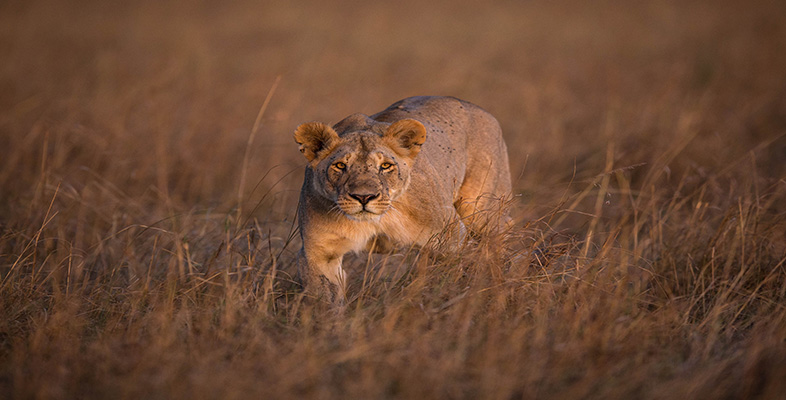3.4 Senses: hearing
Hearing involves the capacity not simply to hear sounds of particular frequencies, but also to locate their source.
Activity 4
From your recent viewing of the TV programme, identify at least one example of the use of sound for hunting. Look in corresponding sections of LoM to find out more information about the species you identify.
Answer
In LoM [p. 136] DA writes about the fennec fox with its 'huge ears … With these they can detect the slightest sound, even the faint scratching made by a beetle as it clambers over sand grains'. The programme shows something of its hunting technique (see 05.46-07.50).
You will have caught a briefer glimpse of the serval (see 03.51). This small but impressive predator is so dependent on acute hearing to pinpoint prey that it doesn't even bother to hunt on windy days.
Making and hearing sounds are very important features of many carnivores, both with respect to interactions with other individuals and with other species. The howling of grey wolves and the roaring of African lions are both illustrated to good effect in TV5. Most young carnivores can make sounds within minutes of birth in response to cold, hunger or pain; hearing and interpretation of sounds develops later. Functions of acoustic communication include play, threat, satisfaction, submission, dominance, courtship and fighting and identification of individuals, groups and species.
SAQ 8
Question: You will have heard in the TV programme the communication calls of lions. From your general knowledge, which of the above functions would you use to classify the following carnivore sounds: (a) the chorus roaring of lions (as in the programme) and the howling of wolves; (b) the purring of a cat; (c) the hissing of a cat; and (d) the 'rut call' of the red fox?
Answer
(a) Group identity, though only the dominant male lions usually initiate the chorus! (b) Satisfaction - continuous, pulsed low-intensity sounds. This state is difficult to define in biological terms, and not all cats purr - purring is unknown amongst the big cats (except the puma), though on the evidence of lounging lions in the TV programme (see 33.52), an air of contentedness after feeding is hard to deny. (c) Threat. (d) Courtship - male advertisement prior to mating.
As DA's on-screen reactions revealed (see 30.05-31.20), the lion's roar is an evocative but intimidating sound. All such sounds have a communication function - they are not a consequence of DA's presence! In The New Encyclopedia of Mammals, David Macdonald points out that the most familiar 'roaring' lion - that at the beginning of MGM (Metro Goldwyn Meyer) films - is not demonstrating typical roaring but is 'merely snarling at some annoyance just off camera. In a genuine roar, a lion purses its lips, thrusting out its chin and pointing its mouth towards the horizon, its body heaving in rhythm with the exertions of its groans and grunts. Humans … can hear it from 8 km (5 miles) away through the African night'.
What you saw and heard in the TV programme answered that description, though a little more restrained and foreshortened than the roars offered by males to advertise their possession and intended defence of a territory. Neighbouring male territory-holders roar back in response; the 'wandering groups of males' that DA refers to [p. 154] remain silent, beginning to roar only when such nomadic males are able to define and mark their own territory. For a lioness, the roar of a male from the same pride has been termed 'the sound of reassurance', offering commitment to a defence against marauding incomers who (as DA describes on p. 154) are otherwise intent on killing cubs. Lions and lionesses have at least eight vocalisations (not counting territory-defending ones), each of which has a particular social function.
